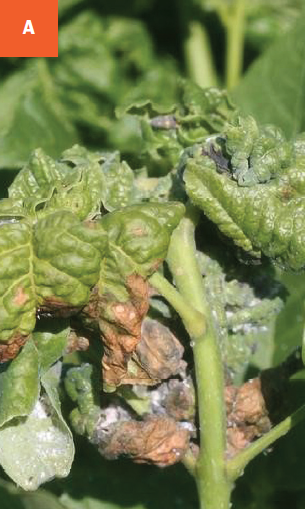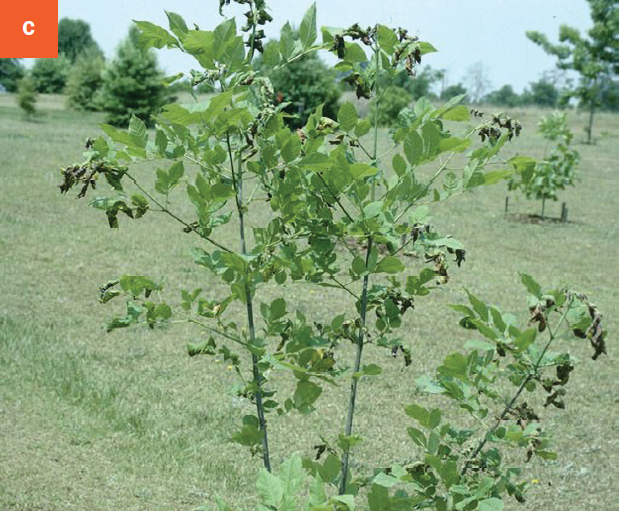Leafcurl Ash Aphids
Prociphilus fraxinifolii
HOST Ash
DAMAGE/SYMPTOMS Aphid feeding creates tightly rolled and thickened leaves. Feeding damage is often referred to as a “pseudo gall” because it causes some distortion and twisting of the twigs next to the damaged leaves. The aphids are found inside the leaves with a waxy-cottony-type covering.
LIFE CYCLE Winged stages disperse to new growth of ash after bud break. Aphids continue to feed within the curled leaves and produce several generations. Populations decline after the new growth stops. Aphids oversummer or overwinter in debris below or near the ash tree.
MANAGEMENT Affected trees should recover from the leaf curling, and the aphids normally disperse from the tree shortly following the development of the new growth. Damage is generally cosmetic and doesn’t typically harm the tree. Keep ash trees adequately watered. Refrain from fertilizing the tree; aphids respond to higher nitrogen concentrations. Pruning has not been very effective due to the high mobility of the aphid. Natural enemies come in later in the season and are an active part of control. Spraying or chemical control with a contact insecticide should be done prior to leaf curling. Once the leaves have curled, a contact insecticide will not be effective, and a systemic insecticide (active ingredients imidacloprid and dinotefuran) needs to be applied for control.
A Curling damage from aphids. B Aphid infestation within the leaf. C Damage on ash from the leafcurl ash aphid.



